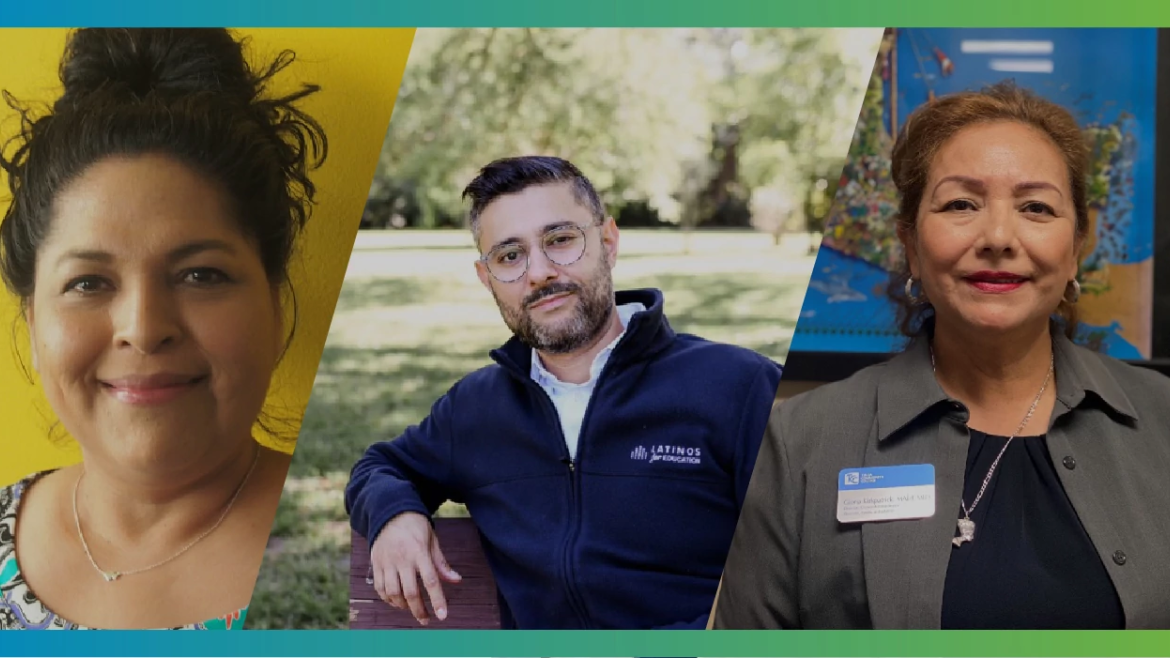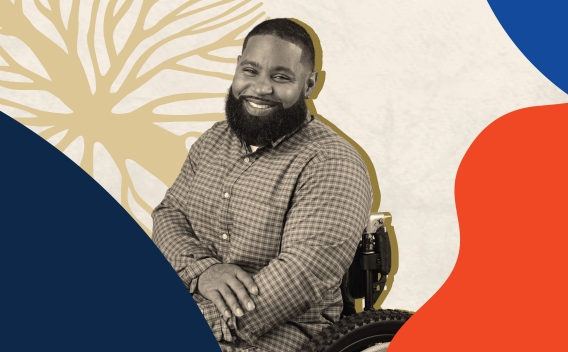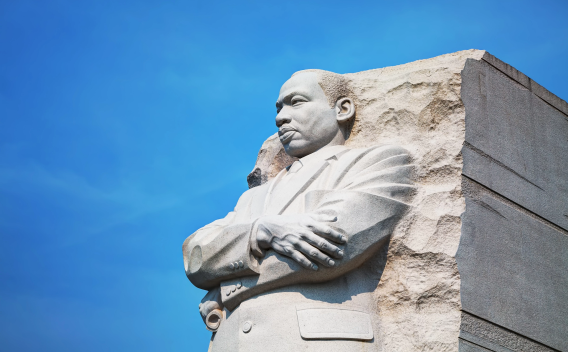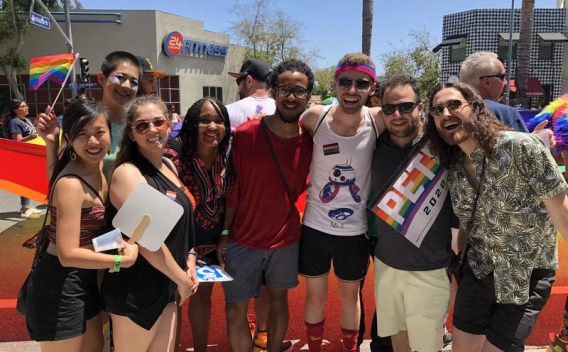By
Published
September 24, 2021
Tags
Gloria Arias-Kirkpatrick arranges college scholarships for immigrants. Carmen Garcia counsels formerly incarcerated individuals and their families. Dr. Daniel Velasco recruits and supports Latino K-12 teachers.
The activists work on different issues in different places but all embrace their Latino identity.
As we observe National Hispanic Heritage Month (September 15-October 15), Arias-Kirkpatrick, Garcia and Velasco provide vivid examples of how millions of U.S. Latinos–those with Latin American ancestry–and Hispanic Americans lead and empower their communities as part of our country’s rich cultural tapestry.
The Joy of Sharing Learning
Gloria Arias-Kirkpatrick was still in elementary school in Mexico City when she realized she wanted to be a teacher.
“To share what you learn with other people is a joy,” says the part-time business professor and full-time Diversity Outreach Coordinator at Tulsa Community College (TCC), a grantee in Schusterman’s Tulsa portfolio.

Gloria Arias-Kirkpatrick, Diversity Outreach Coordinator at Tulsa Community College (Photo: Matt Jostes)
Since 2017, Arias-Kirkpatrick has gone well beyond teaching to support scores of immigrant students in overcoming systemic barriers to higher education through the My Dream/Mi Sueño Scholarship. The majority of applicants for the funds are DREAMers, immigrants—particularly Latinos—who arrived in the United States as minors, with only some achieving legal presence under the Deferred Action for Childhood Arrivals (DACA) program founded in 2012.
Thanks to a 2020 Supreme Court ruling, DREAMers can now attend college without fear of being deported. However, they still aren’t eligible for most financial aid, which is one reason that less than 10% of the nearly 100,000 Latino students who graduate from U.S. high schools every year go on to enroll in college.
Arias-Kirkpatrick understands their predicament. The daughter of a factory worker, she arrived in the United States on a visitor’s visa in 1994 before deciding to remain in the country. She worked at a Burger King in Tulsa for a year until she started learning English and was first hired by TCC in 2000.
“I have received so much help in my life that I’m paying back now,” she says. “It’s an honor for me to be in charge of this program.”
Arias-Kirkpatrick finds fulfillment in watching students’ progress during their college years and in witnessing their parents’ pride. Yet, she is distressed by the obstacles they face in completing their education and finding work.
“It is especially cruel that the government hasn’t fixed the situation of the DREAMers,” she says. “Many of these young students have been here for 17 or 18 years and don’t know any other country but don’t have the security of proper documentation. I had one student who said he didn’t know he was here illegally until he had to apply to college.”

Arias-Kirkpatrick and student Juan Gandara discuss possible scholarships. (Photo: Matt Jostes)
What she most wants Americans to know is that most immigrants come here to work hard, improve their lives and help relatives back home, Arias-Kirkpatrick says.
“We don’t want to take other people’s jobs or hurt anyone,” she adds. “We just want an opportunity to improve our lives and the lives of our families.”
Post-Prison Empowerment
The same aspiration is shared by most people who have spent time in prison, contends Carmen Garcia, who is in training to take over as Executive Director of Root & Rebound, an Oakland, California, nonprofit that advocates for formerly incarcerated people and their families, and a grantee in Schusterman’s Criminal Justice portfolio. Root & Rebound believes that anyone who reenters their community after incarceration simply wants the opportunity to thrive.
Garcia, 53, was inspired to join this work after her own release from federal prison in 2012.

Carmen Garcia, Executive Director of Root & Rebound (Photo courtesy of Root & Rebound)
“No one wakes up one day saying, ‘I’m going to become a criminal,’” she says. “Yet some people receive messages like that from all sides. For me, even the school system was saying, ‘People like you don’t deserve an investment; you’ll probably end up in prison’–and they called it.”
Garcia grew up working in the fields alongside her migrant farmworker parents beginning at age five. She says the struggles her family faced led her to believe a better life was not possible—or deserved—for someone brown and low-income living in the U.S. Garcia was later incarcerated at the age of 41.
Upon her release, Garcia enrolled in City College of San Francisco, where she was mentored by Dr. Terry Day, a founder of the Second Chance program for parolees. With Day’s encouragement, she applied to work at Root & Rebound in 2014 shortly after the organization launched.
Hispanic Americans make up just over 18% of the U.S. population but more than 30% of incarcerated persons. Garcia believes part of the reason is discrimination by the legal system. “I had a white co-defendant who didn’t spend a single day in jail,” she says. “When there is a brown person and a white person involved in a crime, the system goes after the brown person. The system is designed to keep people like me—poor, brown and uneducated—in the prison or jail revolving door.”

Garcia shares a reentry toolkit with Sam Johnson, a friend and client who served almost 40 years in prison. (Photo courtesy of Root & Rebound)
Root & Rebound operates what Garcia says is the nation’s only free hotline for people in and out of prisons and jails. “We are a lifeline for a lot of people,” she says, adding that during the pandemic, the number of hotline calls each year rose from 20,000 to 50,000. The organization has also published the Roadmap to Reentry: A California Legal Guide for currently and formerly incarcerated people and their families. The guide explains everything from how to get a new ID to how to navigate the immigration and parole systems.
As she considers ways to celebrate National Hispanic Heritage Month, Garcia says she hopes to be a role model for aspiring Latino leaders. Her mother, Juanita, was her own model. Every Sunday, while living in southern Texas, Juanita would lead Garcia and her five siblings across the border to Reynoso to distribute plastic bags full of candy and toys to children from even poorer families. Garcia’s mother reminded her and her siblings that “other people in the world are suffering more than you at this moment and we are here to be of service to others.”
Today, Garcia does her best to carry on Juanita’s legacy of helping others. “What I can do as a leader is make sure I open doors for other people of color,” she says. “‘Each one, teach one’ is my favorite mantra.”
Representation Matters
The role models many Latino children find in their families are much rarer in K-12 classrooms, where Latino educators are vastly underrepresented. This dilemma motivates Dr. Daniel Velasco’s work as the Chief Operating Officer for Latinos for Education, a Boston-based national nonprofit and grantee in Schusterman’s Education portfolio, which seeks to keep promising Latino teachers in classrooms while bringing others into the teaching profession.

Dr. Daniel Velasco, Chief Operating Officer for Latinos for Education (Photo courtesy of Daniel Velasco)
Through grassroots recruiting, fellowships and advocating with state and national lawmakers, Latinos for Education brings Latino leaders to the forefront of creating a more effective and fair education for Latino students.
“Many of us have known for a while in our gut that you can’t be what you don’t see,” Velasco, 36, says. “And this is now being backed up by an emerging body of research. Children do better in math and reading, graduate at higher rates and have more college resiliency when they have teachers who look like them.”
As of 2020, more than 22% of Massachusetts’ student population were Latinos. Yet nearly 40% of the state’s school districts lacked even a single Latino teacher, Velasco says. That’s in part because Latinos have a harder time getting into college, completing college, paying teacher certification fees and passing state qualifying tests, he explains.
In addition to his work at Latinos for Education, Velasco helps organizations around the country support Latino teachers and students. Velasco sits on the boards of the National Center for Teacher Residencies, Rocketship Public Schools, City Year Jacksonville and the Jacksonville Area Sexual Minority Youth Network. In 2016, New York City Mayor Bill de Blasio honored him in recognition for his national service.

Velasco speaking at a 2018 Houston retreat for the Aspiring Latino Leaders Fellowship. (Photo: Rick Rodriguez)
Grateful as he is for his own opportunities, Velasco says he hopes many more Latinos can one day hold positions on boards and education leadership teams, where they are strikingly underrepresented.
“I recognize the position of influence I hold and the opportunities afforded to me by my achievements,” Velasco says. “For me, Latino leadership is asserting my identity as an immigrant, a son, a brother, a husband, a padrino to my nieces and a queer educator. It also means shining a spotlight on others: elevating, amplifying and double-clicking on the stories, wins and needs of Latino children, families and educators.”





